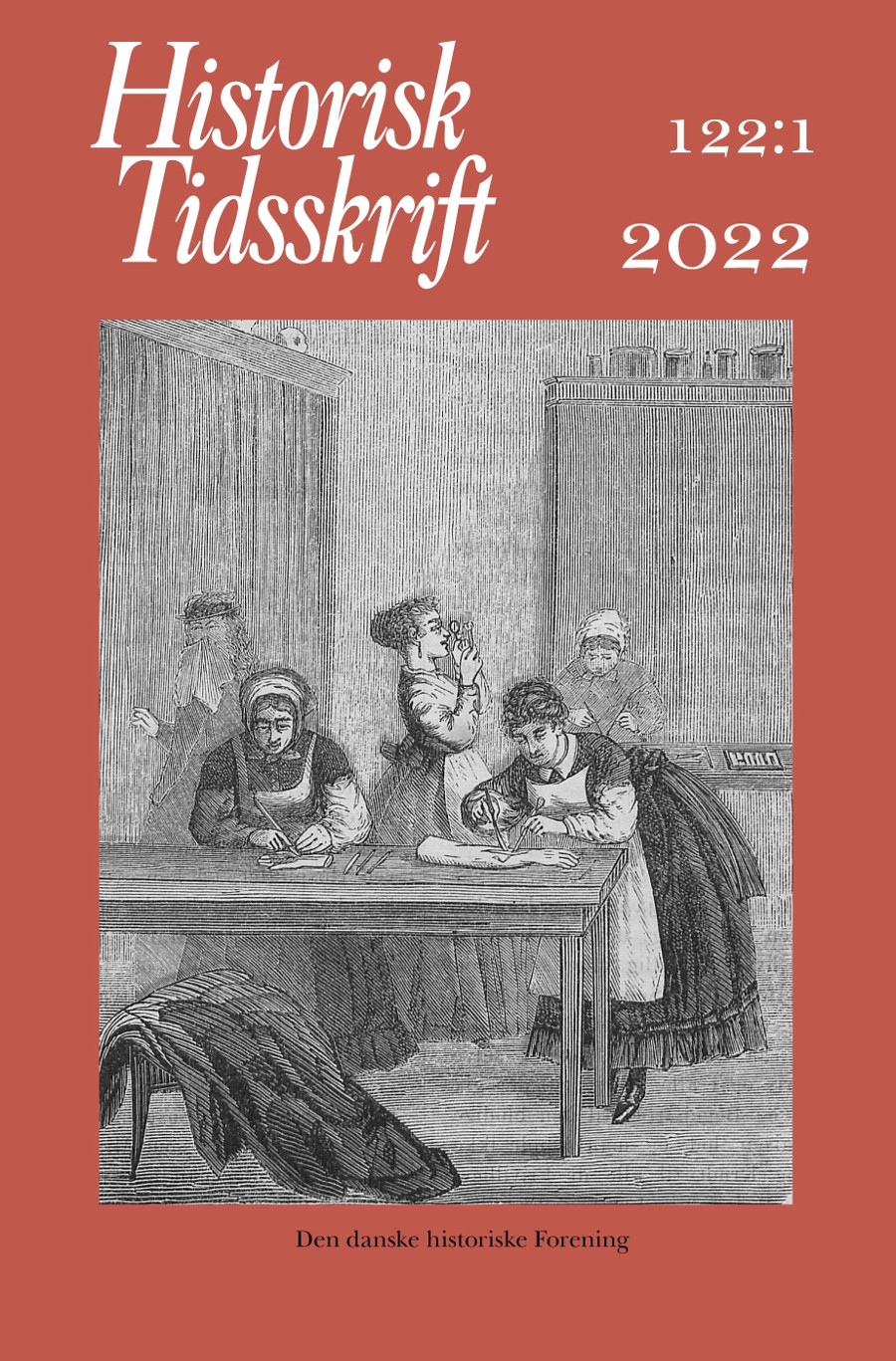Tamperretter eller konsistorier? Riberartiklernes ægteskabsdomstole, deres sammensætning og virke indtil omkring 1600
DOI:
https://doi.org/10.7146/ht.v122i1.132921Resumé
‘Tamperretter’ or consistories? The marriage courts of the Ribe articles, their composition
and activity until around 1600
After the beginning of the Reformation in Denmark in 1536, the ecclesiastical courts that had handled marital cases in the Middle Ages were abolished. At first, King Christian III wanted marital cases to be dealt with by the secular authorities; and in the Church Ordinance of 1537/39 he therefore made it clear that the new, so-called superintendents should have nothing to do with marital cases, but should refer them either to the King or his local representative, or (in market towns) to mayors and city councils. This, however, was changed by the King in the so-called Ribe articles of 1542. These articles stipulate that cases of marital strife and adultery in each diocese should be dealt with by the King’s official in the diocese in question (the so-called stiftslensmand) and the cathedral chapter, and that the superintendents should not be troubled with them unless they were very serious and difficult cases.
Existing research has claimed that the courts introduced in the Ribe articles were the so-called tamperretter (which were named thus because they met at the quatuor temporum of the ecclesiastical year), the activities of which are well known thanks to extant court records preserved in Danish archives from 1645 onwards. The author intends to challenge this assumption by analysing evidence from around 150 marital cases prior to 1600 that he has found in printed source publications, and 91 cases found in an extant, but hitherto unexplored court record book for 1577-1579 originating in the cathedral chapter in Lund and today preserved in the University Library of Uppsala. On the basis of this material, he shows that the new courts were established in all of the eight Danish dioceses, and that they actually handled the cases that they were originally introduced to handle, i.e. marital cases. They were, however, not at all composed as outlined in the Ribe articles. The stiftslensmand rarely or never took part in the handling of cases, and the only person other than members of the cathedral chapter who did take part in court activity was the superintendent, who the Ribe articles had intended to free from the burden of handling marital cases.
In the sixteenth century the marital courts established with the Ribe articles were called ‘consistories’, or just ‘chapters’. This indicates that Christian III had taken the consistory established in Wittenberg in 1539 as his model. By contrast with the situation in Lutheran Saxony, the Danish consistories were not assigned functions in ecclesiastical administration locally, and never evolved into anything more than local courts for marital cases. On the other hand, it was in no way the tamperretter that the Ribe articles established. The name ‘tamperretter’ cannot be documented before the second half of the seventeenth century. And at that time they differed substantially from the courts of the Ribe articles. The conclusion points out that one of the important changes during the genesis of the tamperretter was that the abolition of the office of stiftslensmand around 1580 and of the cathedral chapters in the wake of the introduction of Absolutism in 1660 changed the character of the courts decisively.
Downloads
Publiceret
Citation/Eksport
Nummer
Sektion
Licens
Ophavsret til bidrag i Historisk Tidsskrift tilhører forfatterne og Den danske historiske Forening som udgiver af Historisk Tidsskrift. For illustrationer gælder den ophavsret, som står anført i billedteksten. Ophavsretslovens almindelige bestemmelser gælder, hvilket vil sige, at ophavsretten gælder i 70 år efter forfatterens død. Bidrag i Historisk Tidsskrift må derfor, med forbehold for en ”moving wall” på tre år, frit downloades, læses, gemmes, anvendes og citeres (med kildeangivelse) i privat og videnskabelig sammenhæng, men de må ikke helt eller delvis genudgives af tredjepart, heller ikke i redigeret form, uden tilladelse fra forfatterne og Den danske historiske Forening. Henvendelse skal i så fald rettes til Historisk Tidsskrifts redaktion på histtid@hum.ku.dk.





